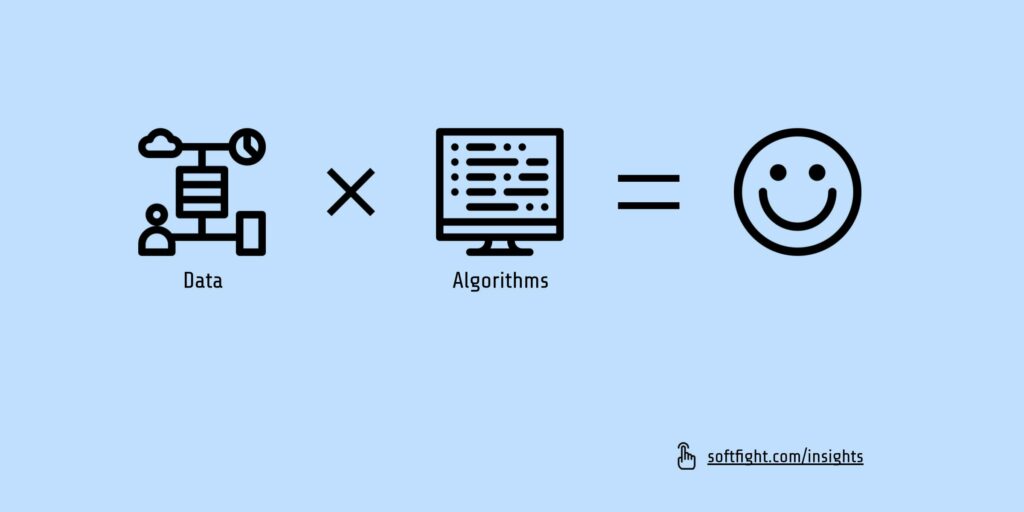Why go to Paris?
That piece of metal is the standard for 1 kg. In the 1790s scientists got together and decided that most countries and people would benefit from using a unified system of measurements. A central role in this unification was the convention of using that piece of metal as the unit of mass, representing 1 kg.
What does this have to do with pricing? Everything.
Everything and anything that is wrong today with how companies manage their pricing can be explained with this piece of metal.
Which also opens a lot of opportunities for anyone willing to put in the effort.
Numbers are relative
All numbers in our lives are relative. Their values are not absolute.
Their value is understood and processed by our brains only in relation to something else. Always.
Stop for a second to let this sink in.
Every. Single. Number. Around. You. Is Relative.
To comprehend its meaning, your brain is comparing it to something else.
The result of that comparison and the decisions you take as a consequence, consciously or otherwise, is most of the time more dependent on the element used for comparison than on the number you started with.
A simple example:
It’s day 3 after launching the improved, re-designed version of your website. You get 1.000 visitors.
Is that a lot? Is it cause for celebration? Or not yet?
It depends what you compare that number with:
- are you comparing it with the average number of visitors you got on the previous version of the website
- or with the target traffic volume you set for the re-launch project
- or with the total number of views your posts and ads received the same day, to see what the conversion rate is?
Everything in our lives is big or small, heavy or light, cheap or expensive, only when compared to something else, not on its own.
Money is relative
Going back to prices and money.
How much is 100 EUR?
You might be tempted to say that 100 is 100, there is nothing to debate here.
Unfortunately, it’s not that simple, because we have to take into account:
- Inflation – 100 EUR in 1999 is equivalent to 143.06 EUR in 2021.
- Net Present Value – you have 100 EUR. You can choose to pay an employee to deliver a service to a customer for a one-time project. Or you can pay a software developer to develop a POC or prototype for a tool that automates that same service, so that you can then deliver it more efficiently and more reliably to 10 other customers in the future. The impact in terms of future earning from 100 EUR spent now is vastly different between the two scenarios.
- Revenues and Taxes – a freelancer making 100 EUR per hour in Germany has to pay income taxes of 42%. The same person moving to Poland and charging 100 EUR per hour only pays income tax of 19%. Which means that for the same quality of work, working for the same client who receives the same value, the prices that need to be charged to arrive at the same net income in EUR for the freelancer will be wildly different. And this before taking into account the Purchasing Power difference between the two countries.
- Revenues and Costs – a retail company making 100 EUR in revenues with fixed and variable costs of 97 is in a completely different business universe than a software company making 100 EUR in revenues with total costs of 67 EUR.
- Value Created vs Price Paid – A supplier is helping Company A save 1.000 EUR per month by using their solution and is charging 100 EUR for the service. The same supplier is working with Company B, charging the same 100 EUR, but the savings for Company B are only around 400 EUR per month.
- Personal History and Filters – 100 EUR means one thing to someone who grew up in a small town, in a lower-middle class family whose parents had to borrow money from neighbours every month to make ends meet compared to someone who always lived a comfortable life. These two people might be colleagues now, they might be in the same room and have to decide if charging 100 EUR per hour for a new project is a high enough amount or not.
- Opportunity Costs – you are an IT services provider. 5% of your team is not currently allocated on billable customer work. Your hourly cost (including taxes) is 100 EUR. You have a potential project that can start tomorrow, that will give work to all those employees not currently billable. Do you accept if the customer is offering to pay 100 EUR per hour for 2 months? What if the project length would be 2 years?
What this means for pricing
100 EUR is not 100 EUR.
100 EUR can have almost infinitely different relative values, depending on the context, what we are looking to obtain, what we are comparing it to and hundreds of other variables that might or might not be relevant to a particular project.
This is why pricing is so difficult. We have to manage all this complexity in our heads.
Not only our own heads, but we also have to adjust for how all the other people involved (colleagues, clients, partners, distributors) think about numbers and their relative value.
One way to approach this is to treat it as art.
To assume price management is this dark magic thing that only a few gifted, fortunate or otherwise special people know how to navigate.
The more sensible way is to approach it using the scientific method. The same scientific method that has enabled humanity to take its exponential development trajectory in the past 2 centuries (for better or for worse, depending on your current mood and how much time you spend on the news).

Pricing is science. Decisions in pricing should be made based on data, with algorithms and decision trees that can be used to achieve results in a narrow optimum interval. Ideally with automated software.
Yes, there are situations that require human judgment to set or adjust price levels. But they are the exception that proves the rule, not the norm.
Related Links
Charts with the exponential development of humanity in the past 2 centuries

